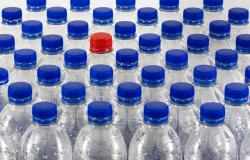Building bioeconomies based on the efficient circular use of resources
Planting regional bioeconomies
Sustainable bioeconomies establish new approaches to resource use: renewable carbon sources replace fossil fuels in the production of food, energy, chemicals, and basic materials, and the use of water, carbon, nitrogen, and phosphorus is more efficiently managed. The combined result is a reduction in overall environmental impacts. Such bioeconomies also give rise to new value chains, markets, and stakeholders. These generate risks, which must be assessed and managed.
These issues exist at multiple scales, from local to global. Ecosystem services, consumer needs and uses, and system vulnerability are all scale dependent. An important concern is the stressors associated with global changes, notably climate change. The metaprogramme Bioeconomy for Urban Territories (BETTER) is carrying out interdisciplinary research on the challenges associated with the bioeconomy transition, notably those related to technological and organizational innovations. More specifically, researchers are examining the relationships of cities with the more or less distant regions that supply their food.
- Carbon, nitrogen, and phosphorus cycles in terrestrial ecosystems
- Water cycles - relationships large and small
- Treatment and usage of biomass, by-products, wastewater, and organic residues
- Biobased products: developing new market relationships and social dynamics
Focus
The goal of the BETTER metaprogramme (Bioeconomy for urban territories) is to explore how implementing a circular bioeconomy in cities and between cities and the countryside could help make cities more sustainable. In particular, it is exploring those socio-economic, organisational, structural and technological changes that could lead cities to reduce waste, better recycle it, and decrease direct and indirect fossil carbon consumption by relying more on bio-based products and energy.

Three exemples
- The development of a new enzyme that can biologically depolymerise plastic waste made of poly-ethylene terephthalate (PET) and facilitate its recycling into new bottles. A major progress by scientists from Toulouse Biotechnology Institute (TBI), an INSA Toulouse/INRAE/CNRS Joint Research Unit, and Carbios, a French green chemistry company that is a pioneer in bioplastics engineering.
-
In view of the scarcity of resources, the ReuseinCities network is being built to develop an interdisciplinary approach to the reuse of treated wastewater, including the issue of "source recovery" of nutrients and other molecules of interest.
-
The MOSAIC Consortium is interested in the urban-rural agricultural and food systems continuum, integrating the production and consumption of biomass, with a view to circularity and sobriety.
Highlights: Irrigating with wastewater [in French]
How to build bioeconomies based on the efficient circular use of resources?
Carbon, nitrogen, and phosphorus cycles
To use biomass and organic products more efficiently, including wastes, we must better quantify material flows, potential production, potential intensification, and the resulting environmental impacts. It is also necessary to improve our assessments of the economic value of environmental services to assess possible trade-offs. Our research aims to close biogeochemical cycles, particularly for nitrogen and phosphorus, while also preserving stoichiometric ratios with carbon and strengthening coupling among multiple cycles (including the water cycle).
Water cycles - relationships large and small
The water cycle, hydrological regimes, and aquatic ecosystems are affected by global change as well as by local pressures, such as changing land use. INRAE research is exploring these effects, including those involving vegetation cover at the watershed scale and beyond. Our objective is to improve our understanding of the water cycle’s components, their variability, and their interactions. The institute is studying how to improve water use efficiency - balancing the needs of urban, agricultural, and industrial systems with those of aquatic ecosystems. We are looking at water quality, the potential to exploit untapped resources (e.g., treated wastewater), and short- and long-term strategies for managing ever-more-frequent water crises.
Biomass, by-products, wastewater, and organic residues
Biomass can be used to create a wide range of food and non-food products. However, we must first design effective tools for processing biomass resources, which present challenges because of their low energy content, low carbon density, complexity, diversity, heterogeneity, and seasonality. INRAE is thus investigating how to develop processes that are efficient, customisable, robust, and low risk (e.g. from a chemical, ecotoxicological, and/or technological perspective). We are examining resource use efficiency across the supply chain and exploring techniques for limiting loss and waste at several scales (e.g., of a production site or a region).
Biobased products
INRAE has taken on the important task of developing markets for non-edible biobased products, progressing with care to build confidence and limit the risks to industries and consumers. Bioeconomy value chains must become more economically attractive than fossil fuel value chains. In a context where it is crucial to ensure food security, there are numerous sources of uncertainty: variability in biomass supply, price volatility, and the risks inherent to innovation development. Furthermore, innovations give rise to social controversies.
More information
Our research theme: Bioeconomy
Our metaprogramme: BETTER, Bioeconomy for urban territories
